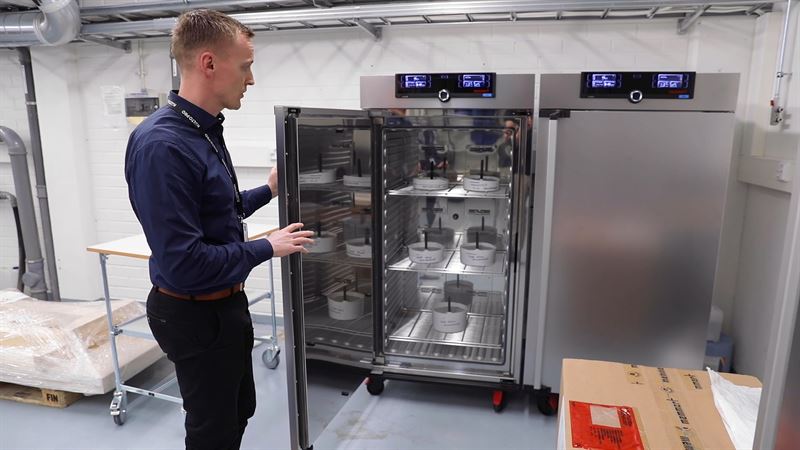Varying conditions have a major impact on the drying times of construction products. Kiilto has begun a study to obtain detailed information on the effect of various conditions. Such information can be used to manage construction site schedules, for example.
Petri Heljo, Head of R&D in construction at Kiilto, points out that the drying times of construction products, such as floor-levelling compounds, are generally indicated in terms of standard conditions.
“Many construction standards define the temperature at 23 degrees Celsius, with relative air humidity at 50%. The drying time in product descriptions is based on these conditions.”
In practice, however, conditions at building sites vary significantly, depending on the season alone. The drying time in varying conditions may be quite different to the time measured under standard conditions. It is therefore important to factor in the conditions.
“Construction projects have tight schedules. If concrete and screed structures take longer than expected to dry, the subsequent work stages will also be delayed.”
And you would be ill-advised to cut corners. If materials are not allowed to dry out properly, you may risk indoor air problems.
Useful information for builders
Kiilto has begun a study to determine how varying conditions affect drying times in practice.
“We have climate chambers with controlled conditions where we can test how long, say, floor-levelling compound layers of a certain thickness take to dry under varying conditions. We can adjust the temperature and humidity in the climate chambers as we like, for example to 10 degrees Celsius and 70% humidity,” says Miikka Haapa-aho, Construction Business Director.
Current tests focus on pumpable floor-levelling compounds. Kiilto is also studying issues such as how conditions affect the drying times of primers, levelling compounds and waterproofing products in wet rooms.
These results can be valuable for large bathroom manufacturers, for example, in helping them to optimise their conditions.
“We are also happy to cooperate with our partners to determine optimal drying times and monitor conditions,” says Haapa-aho.
Quick is a relative concept
Kiilto’s earlier studies can provide some idea of the effect of conditions in practice. According to Heljo, this has been studied to some extent, but additional information on humidity management is clearly needed.
“Under normal conditions, a 40 mm layer of pumpable floor-levelling compound dries in about a month, but if the temperature falls to 15 degrees Celsius and the relative humidity increases to 55%, the process may take up to 15 days longer,” says Heljo.
So, in non-standard conditions, a quick product is only relatively quick.
Building heater not always the ideal solution
Heljo hopes that the data generated by the research is highlighted, and put into practice by users, more effectively than in the past.
“Of course, when schedules are tight, it would be ideal for drying conditions to be good right from the start. But this is not always the case. The sooner you discover that drying will probably take longer than expected, the better the problem can be addressed. This can help you to avoid scheduling challenges due to drying times.”
The study will also help to predict drying times under certain conditions. Sometimes you’re not in a hurry.
“For example, if a longer drying time fits in with the project schedule, there’s no point in obtaining a building heater to speed things up. This would only waste energy and be a poor decision in environmental terms,” says Petri Heljo.
